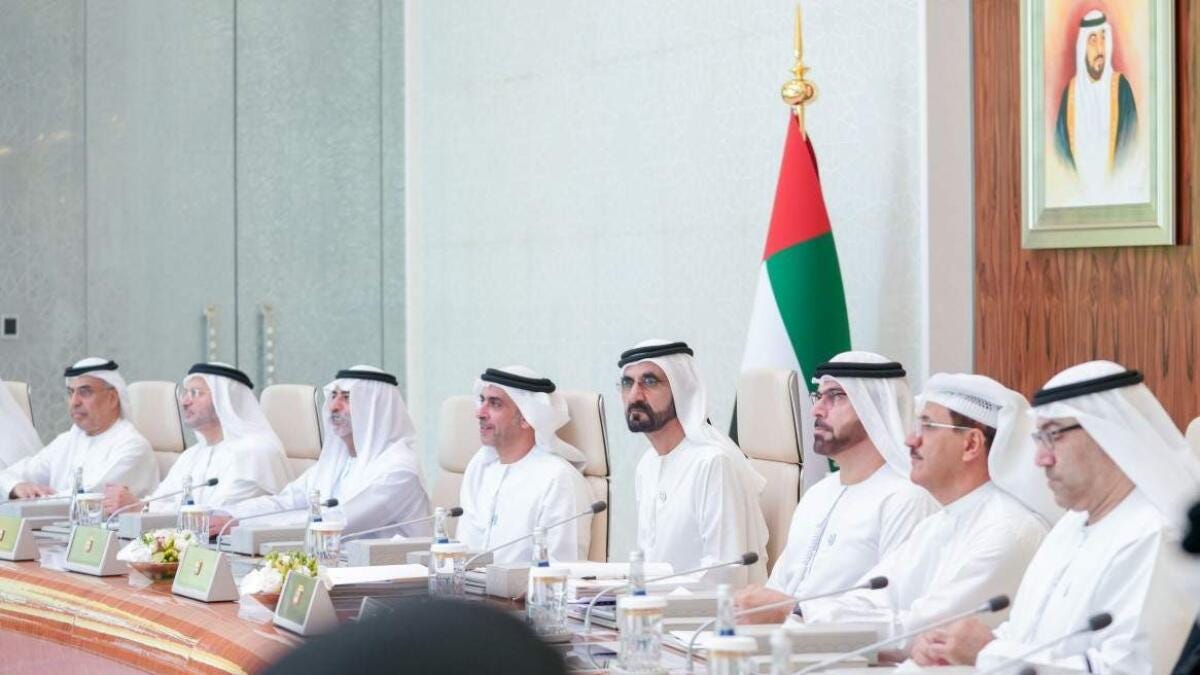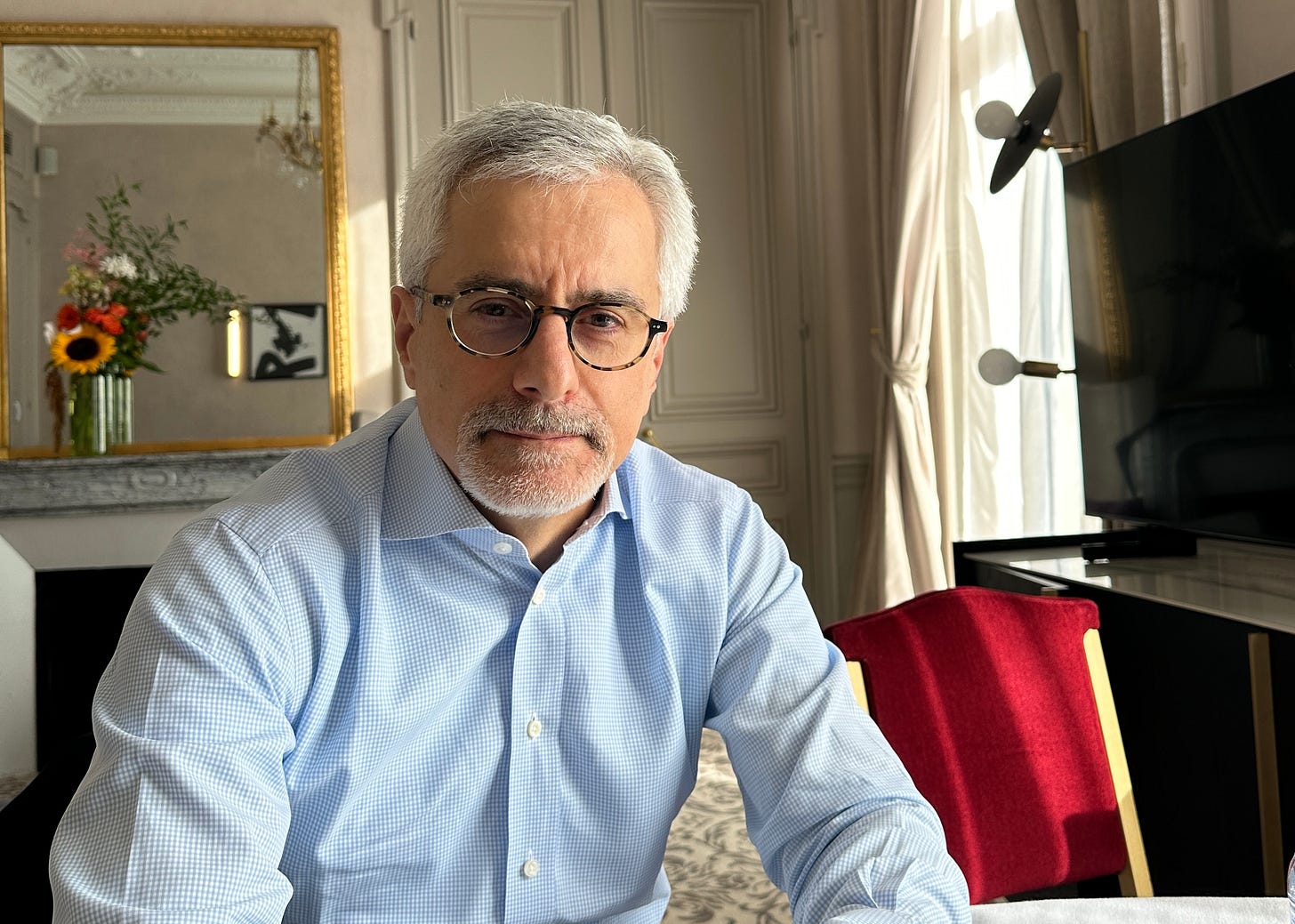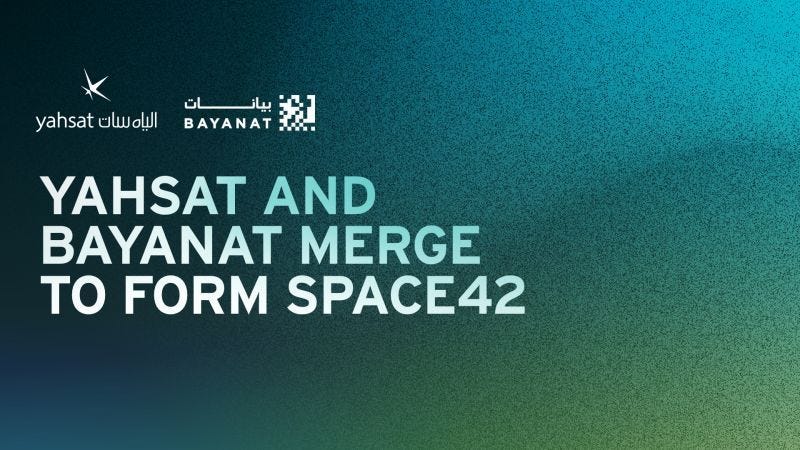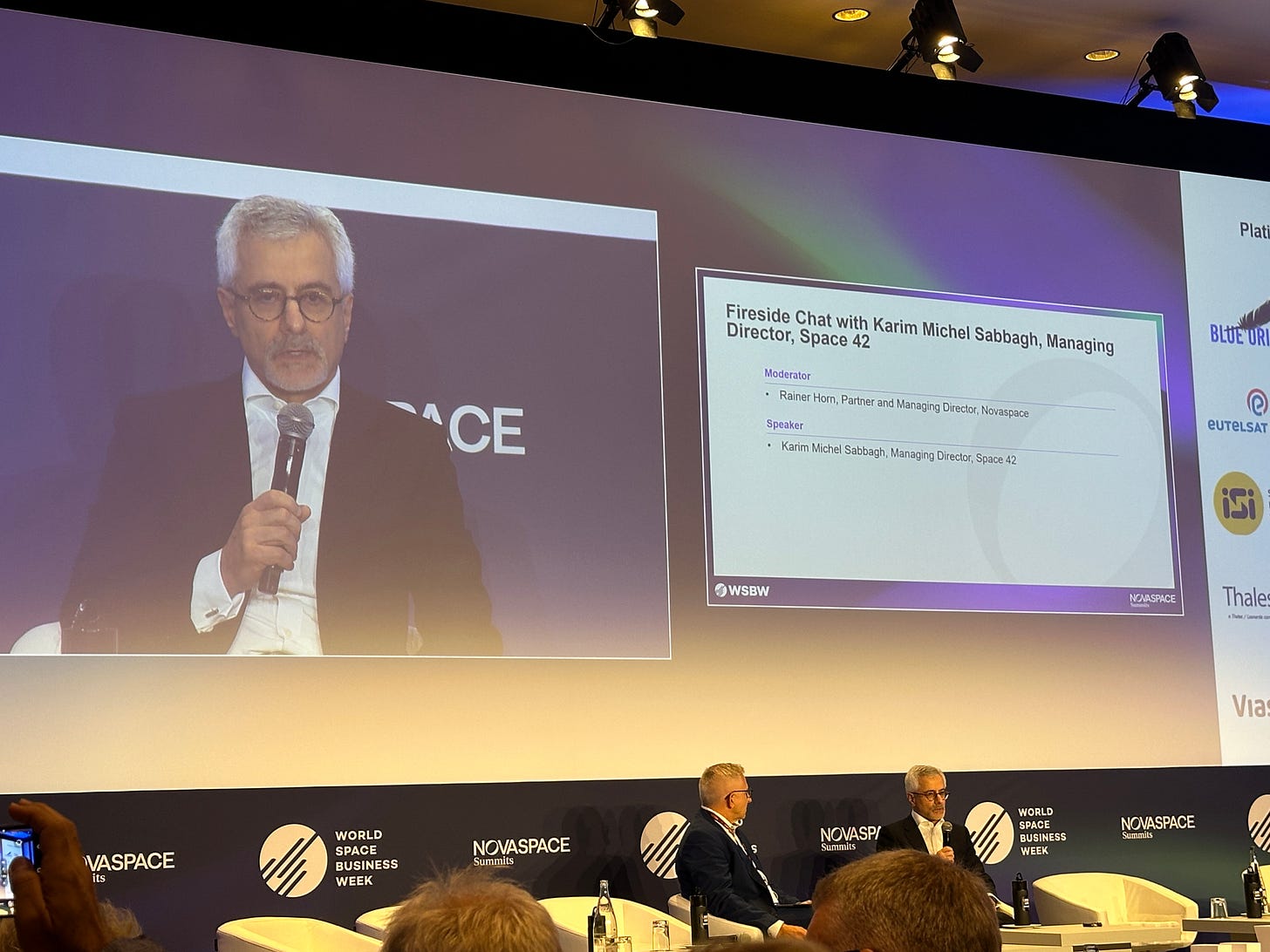The WSBW 2024 Editions: Karim Michel Sabbagh, Managing Director of UAE's Space42
MESM's Paris correspondent, Manel Kerioui sat down with Karim-Michel Sabbagh to discuss the plans for the largest space company in the Middle East, Space42.
The announcement in December 2023 that the UAE’s two premier satellite sector companies, Bayanat and Yahsat, are to merge to create Space42 took the global sector by surprise. With the merger of the UAE’s premier geospatial data company (Bayanat) and commercial satellite operator (Yahsat) nearing completion, Middle East Space Monitor’s Paris correspondent Manel Kerioui sat down with Karim-Michel Sabbagh, Space42’s Managing Director on the sidelines of Novaspace’s World Space Business Week held in Paris, France, on 16-20 September 2024. The Middle East Space Monitor is proud to be a media partner for the 2024 World Space Business Week.
Q: Can you tell us a little bit about yourself, your background, and what attracted you to become Space42's Founding Managing Director?
A: Sure. I'm Karim-Michel Sabbagh, Managing Director of Space42. Before this, I was the Managing Director of E-Space, working in hyperscale IoT—deploying systems in space that scale IoT applications across various sectors on Earth. Before that, I was President and CEO of ICES, Société Européenne des Satellites, and I’ve spent most of my career in the communication arena, both on Earth and in space.
For me, it’s always been about deploying technologies that can make a remarkable impact on society and the economy. That’s been my North Star. And Space42? Well, this is the next frontier. It’s where geospatial data, communication, and AI come together. We’re not just solving today’s problems; we’re looking at how we can hyperscale solutions to serve the masses. That’s the real challenge—and the opportunity—that drives me.
Q: It sounds like Space42 really aligns with your vision for impact. How did the merger of Bayanat and Yahsat come about? What was the thinking behind that?
A: The merger of Bayanat and Yahsat was all about bringing complementary strengths together. Bayanat has deep expertise in geospatial intelligence—Earth observation—while Yahsat excels in satellite communications. The idea was simple: what if we combined these capabilities and injected AI into the mix? You get something much bigger than the sum of its parts. That’s the genesis of Space42.
There’s no playbook for what we’re doing. We’re taking two very powerful but distinct technologies and creating an ecosystem that can solve real-world challenges in new ways. For example, in environmental monitoring or disaster management, Bayanat’s geospatial data can give us critical insights, while Yahsat’s communication systems ensure we can act on that information even in remote areas. This fusion of data and communication creates possibilities we’re just beginning to explore.
Q: Space42 is set to become the MENA region’s first AI-powered space tech company. How do you see AI transforming the space sector, especially in geospatial analytics and satellite communications?
A: AI is going to transform everything. When you combine AI with space technologies, you’re not just looking at data; you’re unlocking new dimensions of possibility. AI allows us to analyze vast amounts of geospatial data in real time, offering insights we could never have seen before. For instance, AI can help us assess damage from a flood within hours, tell us the economic losses, and even prioritize which infrastructure needs fixing first.
But here’s where it gets exciting: when you add AI to satellite communications, you enable things like autonomous systems—whether it’s vehicles, logistics platforms, or asset tracking—running smoothly across vast areas with no terrestrial coverage. And when we talk about hyperscaling, it’s not just about offering solutions; it’s about making them economically viable for the masses. We want to make these advanced technologies accessible and sustainable.
Q: With the merger of Bayanat and Yahsat, how do you envision these combined capabilities addressing critical regional challenges, like environmental monitoring or infrastructure development in the Middle East?
A: Absolutely. A lot of what we’re doing will be driven by the needs of the region—whether that’s environmental monitoring, disaster management, or infrastructure. Let’s take smart agriculture, for example. On the SATCOM side, we could use sensors deployed in fields or vertical farms that not only collect data but also trigger actions—like adjusting humidity or watering—when needed. This could work in areas without terrestrial networks, thanks to satellite communication.
On the geospatial side, imagine using AI to assess weather patterns or environmental events. A few years ago, Bayanat analyzed a massive sandstorm that hit the UAE and the Gulf. The goal was to understand where it started, what triggered it, and how it moved. That kind of predictive modeling can help us better prepare for future events. But to address all these use cases—whether it’s agriculture, critical infrastructure, or disaster response—we need to build an ecosystem of technologies that work seamlessly together.
The challenge? It’s huge. There’s no one-size-fits-all solution, and we don’t have a monopoly on ideas. That’s why partnerships with companies like Microsoft, Airbus, and ICEYE are crucial. You need a community of like-minded builders—people willing to roll up their sleeves and tackle problems with foresight and boldness.
Q: What’s the long-term vision for Space42, especially in terms of global competition and expansion?
A: The opportunities are global, no doubt. We’re targeting markets in smart logistics, transport, autonomous platforms, defense, and infrastructure monitoring. But the key is not just competing—it's about creating value in a way that others can’t easily replicate. We’re combining AI, geospatial intelligence, and satellite communications into a single platform that can scale efficiently.
Here’s where hyperscaling comes into play again. One of the areas we’re focused on is direct-to-device communication. Right now, if you want to communicate directly from space to a device, it usually has to be a dedicated device—like a Globalstar or Iridium or Thuraya handset. But the next frontier is making that happen with everyday devices, like your smartphone. The challenge is to create a global standard that allows this to happen seamlessly, and we're working toward having an announcement by the end of the year on that front. Imagine the paradigm shift when your phone switches from a terrestrial network to a space-based one as you move in and out of coverage areas. We are going to be at the forefront of creating, from space, what mobile operators have created on Earth.
It's crucial to note that this initiative will be carried out in collaboration with Mobile Network Operators (MNOs). We’re not aiming to replace them, as they maintain the direct relationship with the end user. Instead, our goal is to develop a system where, as you and I move from a covered area to a non-covered one, the phone seamlessly switches to another network, which, in this case, could be a space-based network. The concept of hyperscaling is vital here.
Additionally, it's important to be part of a community where, despite our individual differences, we share a common approach to our work. This means applying foresight to everything we do with a necessary level of fierceness and boldness, given the challenges of working in space—whether it's developing space technologies or tackling problems on the ground, like assessing flood damage from images or evaluating economic losses. We don’t have a set playbook for these tasks; instead, we need data scientists to tackle these challenges.
Working with individuals who embody foresight, boldness, and practical action is key. While we can articulate ambitious goals, success ultimately depends on translating those goals into tangible actions. Lastly, we never claim to have a monopoly on ideas or solutions, so finding the right partners for each mission is essential.
Q: The merger of Bayanat and Yahsat brings together strengths in geospatial intelligence and satellite operations. How do you envision these combined capabilities addressing critical regional challenges, such as environmental monitoring, infrastructure development, and disaster management in the Middle East?
A: The merger significantly enhances our ability to address regional challenges through an integrated approach. On the SATCOM side, we can deploy sensors in fields or vertical farms to monitor conditions and trigger actions like watering or dehumidifying. This is crucial where terrestrial networks are insufficient. For example, in the context of smart agriculture, these sensors can communicate data in real-time, enabling precise control over agricultural processes.
On the Earth observation side, our combined capabilities improve situational awareness for environmental events. A notable instance was the unprecedented sandstorm that hit the UAE and the Gulf region a few years ago. We were able to analyze and identify the origins and triggers of the sandstorm, which helped leadership understand the storm's development and improve future predictive models. This kind of analysis not only helps in immediate response but also informs better preparedness strategies for future events.
Combining these capabilities under one roof presents significant challenges. Our GIQ platform integrates data from space, aerial sources, and terrestrial sensors. Over time, we’ve developed a range of algorithms for various applications—environmental events, smart transport, maritime surveillance, and more. This platform allows us to aggregate and analyze data from multiple sources, but we must prioritize which use cases to focus on due to our finite resources.
Critical infrastructure is a major area of focus. Understanding the status of power lines, oil pipelines, and telecom networks is crucial. For example, in northern Quebec, severe weather often causes power outages due to falling trees or storm damage. With better monitoring, we could identify issues more quickly, reducing the need for physical inspections during storms.
Asset tracking is another critical area, impacting logistics and the movement of goods across different modes of transport. Autonomous platforms also present significant opportunities, where the convergence of communication and geospatial data can drive advancements.
Defense and security are additional domains where our combined expertise will be impactful. Although the types of assets used in space are similar—such as imaging and infrared scans—the application and interpretation of these assets will require specific expertise.
In SATCOM, flexibility is crucial. For instance, IoT devices depend on their internal chipsets, which can be integrated into various applications, from handsets to telematics in vehicles. This flexibility allows us to adapt SATCOM technologies to diverse needs.
Overall, the merger enhances our ability to address a wide range of regional challenges by leveraging our combined strengths in satellite communications and geospatial intelligence.

Q: As the UAE strengthens its position as a regional space leader, what role do you see Space42 playing in advancing the country's National Space Strategy 2030 and its National Strategy for Artificial Intelligence 2031?
A : The UAE's Space Strategy 2030 is built around several key pillars. The main objectives include fostering a robust space ecosystem, nurturing future talent for the space industry, developing sovereign capabilities, and creating conducive policies and regulations.
In terms of our contributions, we can support all these pillars. For instance, with our SAR constellation project, we are starting to bring assembly, integration, and testing activities into the UAE. This is a crucial step towards local manufacturing of space technologies. We're also working on a major project with international partners and key stakeholders that, if successful, will further accelerate the development of the space ecosystem by establishing a resilient supply chain and potentially developing more capabilities locally.
This growth will create opportunities for the new generation. Not only engineers but also technicians and other skilled workers will be needed. From my previous experience at eSpace, I saw that a large majority of roles in manufacturing facilities are occupied by technicians—people who work hands-on with the technology. Many of the young professionals I met at SpaceX, for example, were technicians who had come from various backgrounds. This highlights the diverse opportunities available in the space sector.
Moreover, as we advance, our work will provide valuable feedback for policymakers. Regulations are not static; they evolve. Our collaborations with the TDRA and the space agency show that regulatory frameworks are adaptable and responsive to industry needs. Similarly, the AI strategy focuses on developing an ecosystem, applications across industries, and nurturing talent. We aim to contribute to these areas as well.
However, I believe our aspirations should extend beyond regional leadership to making a global impact. For example, if we develop a global Earth observation platform that is cloud-native and accessible through platforms like Microsoft Azure, it could be used worldwide. This means that during events like natural disasters, nations could access comprehensive data to make informed decisions.
Ultimately, our goal is to build systems and technologies that not only serve the region but also have a global reach. Whether it's through direct-to-device constellations or other initiatives, we envision our projects having a worldwide impact.
Q: With the rapid developments in the UAE space ecosystem—such as the emergence of new companies, investments, and expanding portfolios—how do you envision Space42's role in this evolving landscape? What will the company look like in five years?
A: In five years, I'd like to see Space42 making significant strides in both Earth observation and SATCOM, particularly in geospatial intelligence. Our industry often uses acronyms like PNT, GEOINT, and SATCOM to describe our areas of focus. For Space42, success means not only having advanced capabilities but also delivering proven products and services on a global scale. If we don’t achieve that, we would have fallen short of our ambitions.
Additionally, I foresee Space42 being part of a coalition with two or three technology partners, each complementing the others. We won't claim to be experts in every aspect but aim to work collaboratively with others whose strengths balance our own. In this collaborative environment, we can achieve our goals more effectively. Despite the competitive nature of our industry, there's a strong sense of camaraderie among operators. Although we compete fiercely, there's a genuine willingness to collaborate on global projects, transcending regional boundaries.
However, we also need to navigate the increasing emphasis on sovereignty. As we build these global systems, we must ensure they address the sovereignty requirements of various nations. While I don't have all the answers, I’m aware of the importance of integrating these considerations.
Looking ahead, I hope that within five years, a significant portion of the Space42 team will be composed of newcomers—people who are excited about joining this journey. It’s crucial to infuse the industry with new talent, especially given how much more dynamic and rapid the space sector has become. Unlike the past when space missions had long development cycles, today’s industry features shorter development timelines and more frequent updates.
I recently discussed this with the Wall Street Journal, highlighting that the industry is increasingly moving towards verticalization. Traditionally, companies like SES or Yahsat would design a mission, and collaborate with manufacturers, and the entire process would take several years. Now, the design, proof of concept, and manufacturing are becoming more integrated within satellite operators themselves. This verticalization trend means that satellite operators are more involved and invested in every stage of the project, providing startups with clearer paths to success and integration.
In summary, the industry is evolving towards more cohesive and vertically integrated models, and Space42 aims to be at the forefront of these changes.







